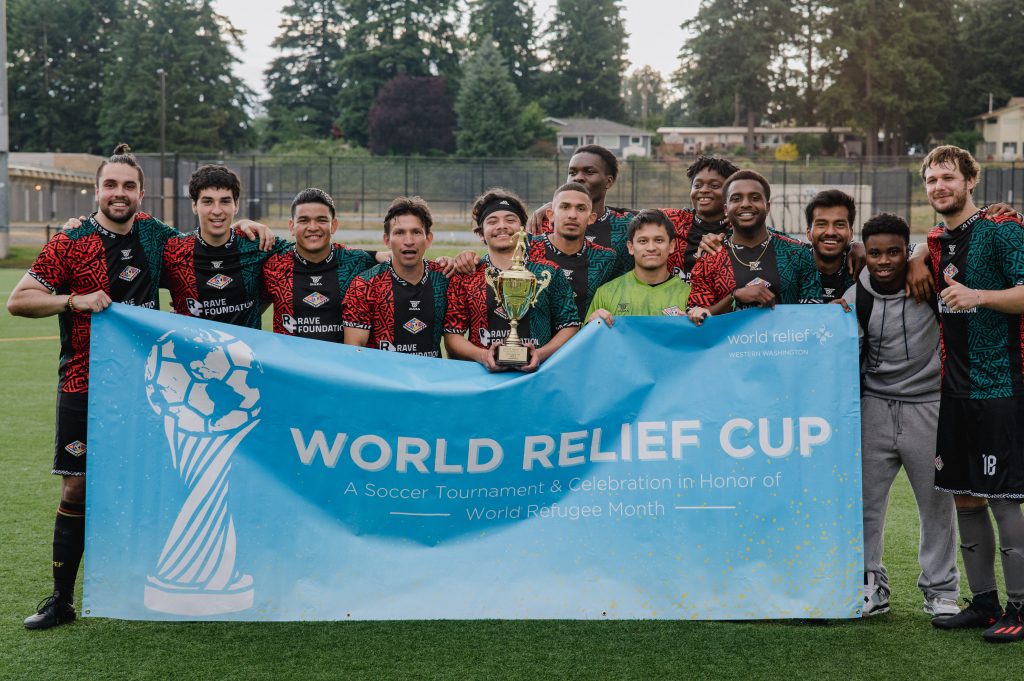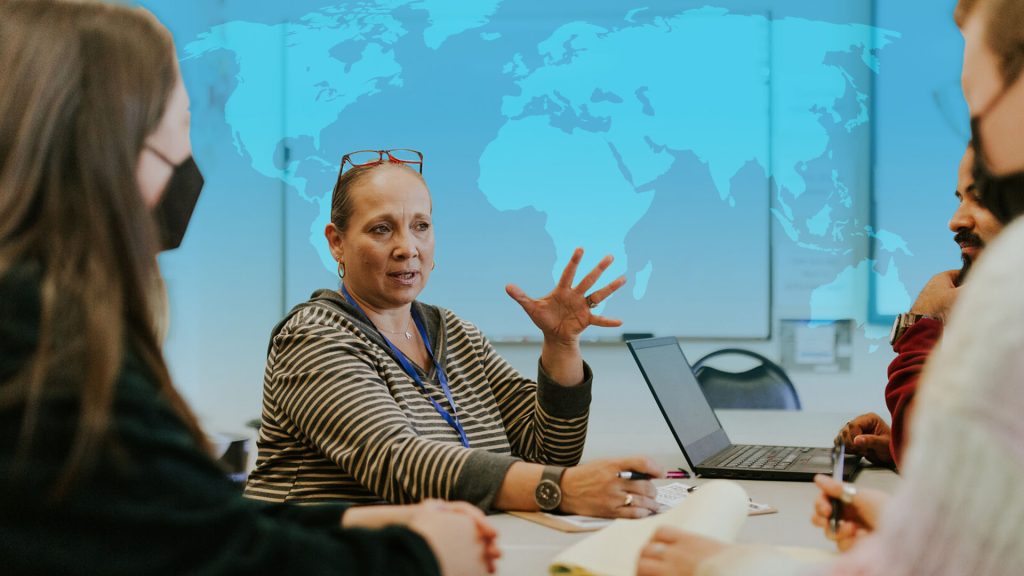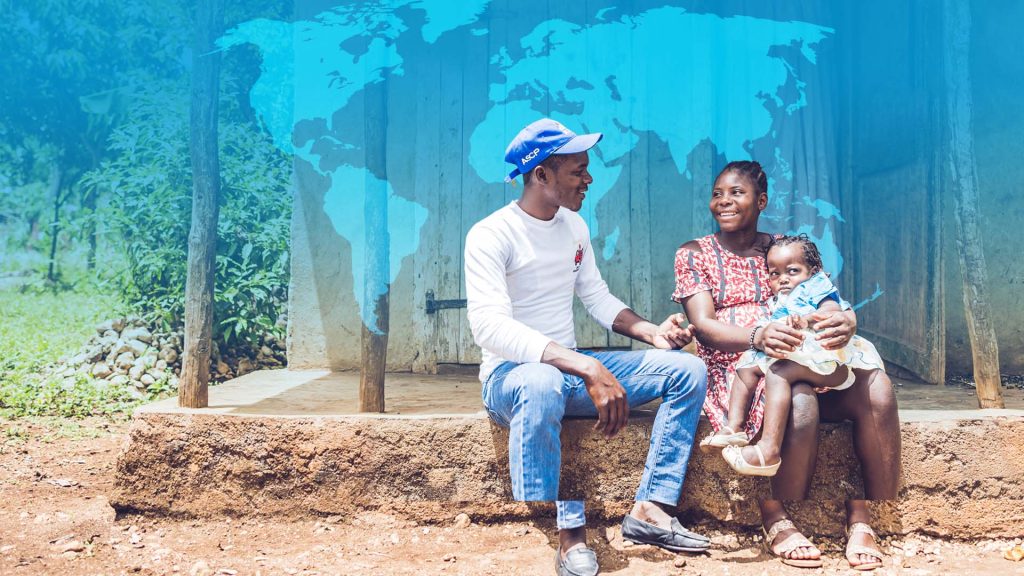Blog
Time is running out for many Ukrainians living in limbo in the U.S.
by Michael Kovbanyuk //
“In June, Russia launched its missiles at Ukraine in two separate pre-dawn attacks leaving 23 dead and many more injured. While the war in Ukraine may be fading in the minds of Americans, these recent attacks serve as a painful reminder that countless Ukrainians still live in fear for their lives every day.
Since the war began in 2022, more than 118,000 Ukrainians have found safe refuge in the United States under Uniting for Ukraine. This program, established by the U.S. government last year, grants Ukrainians seeking refuge temporary parole status in the U.S. for two years. However, it leaves vulnerable people in need of refuge in limbo while they wait to learn their fate regarding permanent residency. …” Read the full piece at the Greensboro News & Record
Creative Solutions for Refugees in South America
Since 2017, Venezuelans have been fleeing the country, escaping a combination of hyperinflation, lack of food and water, and government violence. In response to this large influx of over six million refugees all throughout South America, Colombia and Brazil have adopted unique measures. Instead of resisting immigration, they’ve supported refugees and welcomed them with open arms. What kind of measures have Brazil and Colombia adopted and what can we learn from them?
Brazil
In 2018, the Federal Government of Brazil initiated “Operation Welcome,” a voluntary relocation program to support refugees and migrants coming into Brazil.
The basics of Operation Welcome
Operation Welcome rests upon three main ideas. First, the Brazilian government works to ensure efficient border management. As of 2023, there are approximately 800,000 Venezuelans who have entered Brazil. Operation Welcome provides refugees with proper reception, identification, and basic medical care. For support in managing the border, Brazil sought help from the international community, inviting the International Organization for Migration (IOM). IOM helps in verifying refugees’ and migrants’ identities and providing health checkups.
Second, Operation Welcome is concerned with welcoming refugees in Brazil’s border cities, as the name implies. Refugees are provided food, education, health and psychological care, and social protection.
Finally, a key step in the operation is the economic opportunity it provides. IOM works with the Brazilian government to search for job vacancies and arrange for transportation to various other cities in Brazil, where they’re matched up with a new job. Refugees are also encouraged to work in Roraima and become self-sufficient.

Brazil also provides a “Passport for Education,” a kit consisting of bilingual education booklets with cultural information about Brazil and guides on how to enroll in Brazil’s public schools. Even during COVID-19, Brazil was able to adapt its procedures to continue to support Venezuelan refugees and migrants.
As of 2021, Operation Welcome had managed to find work, schooling, and opportunity for over 256,000 refugees, of which 87% are families. While not yet managing to address all migrants, Brazil has accounted for over 32% of Venezuelans entering Brazil, almost a third.
What we learn from Brazil’s refugee policy
Instead of creating large, unsustainable refugee camps, Brazil has preferred to integrate Venezuelans into the local region. Rather than refusing to grant identification and work permits to Venezuelans, Brazil gave them the right to seek economic opportunity quickly. Instead of confining Venezuelans to the border, Brazil let them fully integrate into the country.
So, what is the key takeaway? Brazil didn’t resist Venezuelan immigration—they embraced it. Now, tens of thousands of Venezuelans have found new lives, are self-sufficient and independent, and contribute to the Brazilian economy. Brazil’s programs show firsthand how refugees are a valuable part of the community, and that if we embrace them, we can better address the displacement crisis.
Colombia
Colombia faces a more difficult-to-manage influx of refugees and migrants. It’s estimated that over 1.7 million Venezuelan migrants came to Colombia in 2017. However, just like Brazil, Colombia practiced a policy of integration.
Colombia invests in infrastructure that supports refugees and migrants.
Colombia had initially refused to build traditional refugee camps for fear of slowing down Venezuelans’ integration into the country. However, Maicao, the main region bordering Venezuela, eventually became overwhelmed, and the Colombian government was forced to call in UNHCR for support. Nevertheless, the camp in Maicao is far from a traditional refugee camp. In fact, its inhabitants are only allowed a temporary stay, typically for a few months, but are given all the tools necessary to stay in Colombia and find employment or move on to another country. Venezuelans are also encouraged to reunite and live with family members present in Colombia.
During this time, Colombia has worked to improve infrastructure in its border regions to support refugees. In 2019, it approved the “Second Fiscal Sustainability, Competitiveness, and Migration Development Policy Financing” (DPF) program. Its goal was to modernize government policies and extend the reach of Colombia’s National Employment Agency, allowing over 115,000 Venezuelans to access its services. It granted over 281,000 migrants a temporary stay status.
Colombia’s next project, “Improving Quality of Health Care Services and Efficiency in Colombia,” improved health infrastructure in border regions and enrolled over 200,000 Venezuelans in Colombia’s national healthcare programs.
Additionally, the “Colombia: Resilient and Inclusive Housing Project” improved housing infrastructure and access to housing for refugees and migrants.

Colombia helps refugees and migrants integrate
In 2021, Colombia extended temporary protected status for 10 years to over 1 million Venezuelans. Over half of the 1.7 million Venezuelan migrants in the country received access to social services and a pathway to a residency visa. This represents a major humanitarian act, especially since over half of these Venezuelans lack regular refugee status.
This move also gives Venezuelans the right to work in the Colombian economy. Up until that point, many Venezuelans were working in the informal economy, under the table. Overall, this move allowed Colombia to support the integration of Venezuelans and absorb the shock that this displacement represents.
The situation in Colombia shows the same positive benefits as in Brazil. Colombia’s policy of integration and support has allowed it to weather a much worse refugee crisis—Colombia faces almost a million more refugees and migrants than Brazil. However, these migrants have been able to find work and quickly resettle and contribute to the Colombian economy. When border regions became overwhelmed, Colombia invested money into these areas, not to further hamper border control, but to invest in the future and stability of migrants. Colombia has also embraced the displacement crisis with more positive results.
United States Policy and Title 42
Title 42 is a federal law that dates back to 1944. Back then, tuberculosis posed a major health threat to the country, and thus a law was passed to allow immigration authorities the right to deny or expel migrants that posed a health threat to the United States.
During the COVID-19 Pandemic, the Trump Administration invoked Title 42, expelling over 2.5 million migrants at the border in total. About half of all who were encountered at the southern border in the last year were expelled under Title 42. Therefore, Title 42 virtually shut down the United States’ entire asylum system.
However, Title 42 didn’t last forever. On May 11, 2023, Title 42 expired, and the Biden Administration had to figure out how to re-order the U.S. immigration system. In the months leading up to its expiration date, immigration authorities began to prepare for the resulting influx of migrants. Now that the border was accepting migrants again, many more would come.
The Biden Administration post-Title 42
In response, the Biden Administration announced in April 2023 the opening of new processing centers outside of the United States, organized by the IOM and the UN Refugee Agency (UNHCR). The first two centers will open in Guatemala and Colombia, with others expected to follow. In short, these processing centers aim to quickly screen migrants and asylum claims in Central and South America instead of having them arrive at the U.S. border. This new plan works in conjunction with Canadian and Spanish immigration authorities, with both countries saying they would accept migrants processed at these centers. If migrants at the border are found to qualify for asylum, they will legally be flown into these countries.
However, this new plan also means stiffer penalties. The Biden Administration plans to process asylum seekers at the border in mere days with the goal of swift deportations if migrants don’t meet the necessary criteria. Those who are expelled from the U.S. would be unable to return to apply for asylum for five years. The Administration also said that it plans to crack down on asylum-seekers who pass through another country without first seeking protection there.
Supporting Refugees and Migrants Works
Brazil and Colombia welcomed migrants and gave them opportunities to integrate into their local economy. They gave migrants who didn’t have legal status papers, supported their enrollment in schools, helped them find work, and treated them like valued community members. There’s always something to be learned from other countries, and while Brazil and Colombia have different economies, governments, security measures and other mitigating factors, their approach to the global displacement crisis provides unique insight. What might we take away from their approaches?
As we work to welcome refugees and migrants into our community, please consider supporting World Relief and our work.
________________________________________________________________________________________________________________
Antoine Herrbach is a 2023 Summer Intern for World Relief. He is a Senior at Gonzaga University, studying Political Science, History, and Economics.

Let’s Learn About: Asylees
We are reflecting this month on Independence Day and the freedom that has attracted people to the United States. At World Relief Memphis, we often reflect on America as a country of immigrants and displaced persons. Throughout the generations, people have immigrated to the U.S. and established new lives. That continues today!
Asylees are just one of these immigrant groups.
The amount of competing information around immigration can be overwhelming. But World Relief has been welcoming immigrants in partnership with churches and compassionate individuals like you since the 1970s, and for over 10 years here in Memphis!
World Relief Memphis specifically assists those who are seeking safety through various pathways established by the United States Government. In this five-part series, with help from our Initial Welcoming Services and Newcomer Outreach Service teams, we will be sharing the various different legal pathways to the U.S., how those pathways began, how we come alongside new arrivals, and how you can join us in welcome.
Background
The history of asylum began when refugee resettlement laws started to form in the mid to late 1900s. Under the Refugee Act of 1980, the United States created legal obligations to provide protection to those who qualify as refugees (State Dept.). That means that Asylum seekers prove the exact reasons for persecution as a refugee and cannot return to their home country due to past or well-founded fear of future persecution “on account of race, religion, nationality, membership in a particular social group, or political opinion.”
The difference about asylum seekers is that protection is granted to those “already in the United States or arriving at the border” who can prove their fear of persecution. (American Immigration Council). Another critical point is that not all asylum seekers are granted asylum.
The U.S. Asylum Process
The asylum process is complicated, but the more we learn, the better neighbors we can be for our immigrant brothers and sisters. Let’s break it down by going over the key points:
- All asylum cases are handled by the USCIS, such with all other immigration pathways to the United States.
- The U.S. admits around 25,000 asylees each year, but currently there is no limit set by the government.
- An asylum case begins when a person seeking asylum arrives at a U.S. port of entry:
- Border crossing
- Airport
- Seaport
- Once at an entry point, there are generally 2 types of cases the person will fall under:
- Affirmative Asylum: This is known as a “regular” asylum case. This is where the applicant is present in the United States and can apply at any port of entry by filling the official application for asylum and withholding of removal or deportation. The applicant then goes into a series of interviews to prove their case.
- Defensive Asylum: This term references when removal proceedings have already begun. “The applicant is asking for the government to reverse its decision to deport and allow them to remain in the United States via asylum. An immigration judge makes a decision independent of any previous decision by USCIS.”
- Proving an asylum case is a long process in itself, as they must provide evidence they can show to a court or the asylum officer conducting their interview.
- While this process is happening, asylum seekers also undergo a USCIS biometrics appointment to be used in their extensive background checks and security screenings.
- If their case is approved then the person or persons on the case can now reside in the U.S., receive work authorization, and have access to healthcare.
- It is important to note that some asylum seekers are allowed to reside in the U.S. while their case is being processed. Some asylum seekers are also granted work permits as well before official case approval.
- After one year, an asylee may then continue on the path of citizenship and apply for permanent residence (green card).
What We Do
World Relief Memphis currently works with those who have approved asylum status, not asylum seekers. This is because we do not offer Immigration Legal Services at our particular office. Until an asylum case is approved, asylum seekers do not yet qualify for the benefits provided to refugees.
Since the asylum approval process can vary in length, by the time their case is approved, many asylees are already well established in their life in the U.S. At our office, the main areas we serve asylees are in our extended case management services:
- Economic Empowerment: aids in job readiness, application process, and placement.
- Holistic Support Services: aids clients in health and wellness goals, especially clients with additional vulnerabilities.
- Refugee and Immigrant Youth Services: provides school enrollment services, group mentoring, and one-on-one mentoring where refugee and immigrant youth learn how to set and meet goals in their personal, school, and post-school life.
- The Connect Language Center: English as a Second Language (ESL) program open to program participants and the general public. Here students are enrolled in ESL classes of varying levels depending on starting knowledge.
How You can Help
The immigration system is broken and it can be overwhelming to learn about and know where you fit in. While we might be tempted to look away, the love of Christ compels us to turn toward the need — to consistently and lovingly step toward those who are hurting. If you’re like us, you’re asking yourself: How can I make a difference and create lasting change when the problems in the world are so big?
The good news is none of us has to take this journey alone. World Relief Memphis has been present and working in this city for the past 10 years and is equipped with 80 years of connections and expertise through the World Relief’s global network. We have been partnering with you, the local church and community to make Memphis a more welcoming community.
Here are 4 ways you can be a part of lasting change:
- Learn: One thing that asylees need while waiting for case approval is community. Learn how to walk alongside our newest neighbors using the World Relief Memphis Workshop! With courses to learn more about cross-culture friendships, reflections on biblical thoughts about immigration, and more!
- Advocate: You have a voice to change the immigration system for the better! Check out our Advocate page to see how you can share your voice on issues like the recent expansion of the Title 42 policy. This policy hinders individuals right to seek asylum, disregarding the terms of longstanding U.S. immigration law. Read more about what World Relief’s President and CEO, Myal Green, shares on the topic here!
- Volunteer: Want to walk alongside individuals and families here in Memphis? Check out our volunteer page to see what opportunity is right for you. You can do everything from apartment set ups, driving clients to ESL classes, mentoring refugee and immigrant youth, to being in a Good Neighbor Team where you get to welcome and walk alongside a refugee family for the first 6 months of their time in the U.S.
- Give: When you give to World Relief Memphis, whether it be once or monthly, monetarily or gift in kind, you are making a big difference in the lives refugees and other immigrants in vulnerable situations.
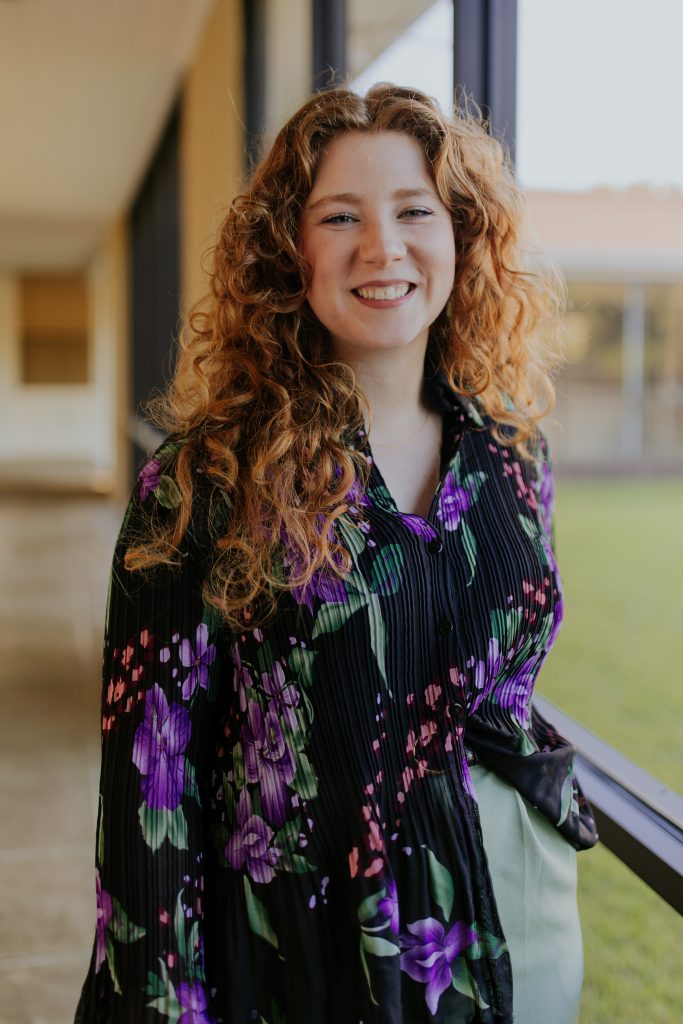
Writer: Kara Spencer
Communication Coordinator at World Relief Memphis, graduate of Harding University, & Memphis native.
If you would like to learn more about World Relief Memphis in the coming months, follow us on social media and sign up for our newsletter to stay up to date on events and volunteer opportunities.
If you are searching for an opportunity to begin making a bigger impact, join our new monthly giving program, The Path, for exclusive updates, virtual events, prayer chains, and stories of hope from the women, men, and children whose lives you change.
Compassion: Moving into Suffering
Destruction. And hopelessness. Those were the two realities Deb Russell faced everywhere she looked when she deployed to Turkey with Crisis Response International in March.
On February 6, 2023, an earthquake of magnitude 7.8 hit southeast Turkey near the Syrian border. After the initial earthquake, aftershocks numbering in the thousands continued to rock the region.
When Deb arrived in March, she found endless piles of rubble. “Just dust really.”
Formerly beautiful marble homes and structures hit by earthquakes from two different directions had crumbled, trapping thousands of people inside. The piles of rubble became burial grounds for innumerable decaying bodies, irretrievable by search-and-rescue teams.
The government had sprayed the piles to prevent the spread of disease and to keep down the smell. An impossible task really, and Deb, along with many of her team, came down with some type of eye or respiratory infection when they returned home.
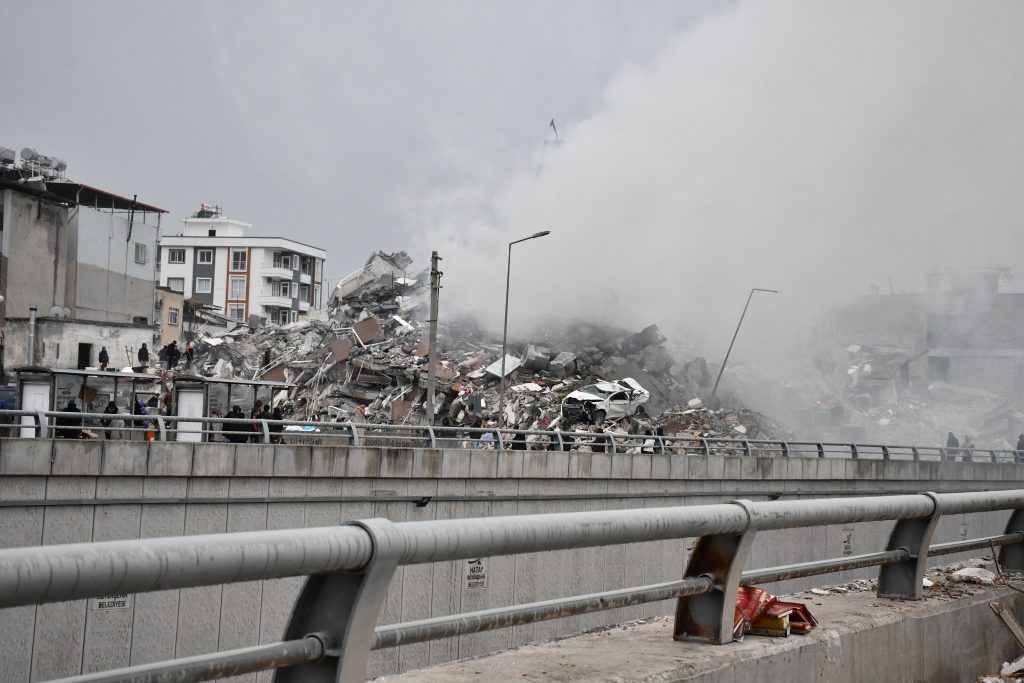
Deb Russell, a trained EMT, is used to moving into uncomfortable places. Her international work started, amazingly, with 9/11. “That was my impetus to go. I wanted to be part of the solution. I have the skills. I’m trained for it, and I want to help people when they’re in crisis.”
Prior to the earthquakes in Turkey, she also went to Greece during the Syrian refugee crisis of 2011. She stood on the shore, helping people from boats, administering emergency aid to the elderly, to pregnant mothers, to children. Holding and hugging, she prayed the Holy Spirit would transfer from her heart to theirs.
“It was like the end-times church. Christians coming from all over the world to extend hope and prayer and the love of Jesus… To proselytize is against the law, so you sing in whispers. I love being in the Body of Christ; unapologetic, unbound, candle-burning at both ends and dispelling darkness with love.
“The Turkish people had lost all hope,” Deb said. Many of them had never known poverty before, but quite suddenly, they were left without anything. “They didn’t even have rope to tie their tattered tarps.” Many of them believed their god was angry with them because of the corruption in the country and government. They would hug us and thank us, asking again and again, Why have you come? How is it the Christian Americans are here to help us and our own government has yet to bring assistance? They just couldn’t believe it. They felt deserted by everyone.
“Jesus brought me,” Deb replied, “and that’s how I found you.”
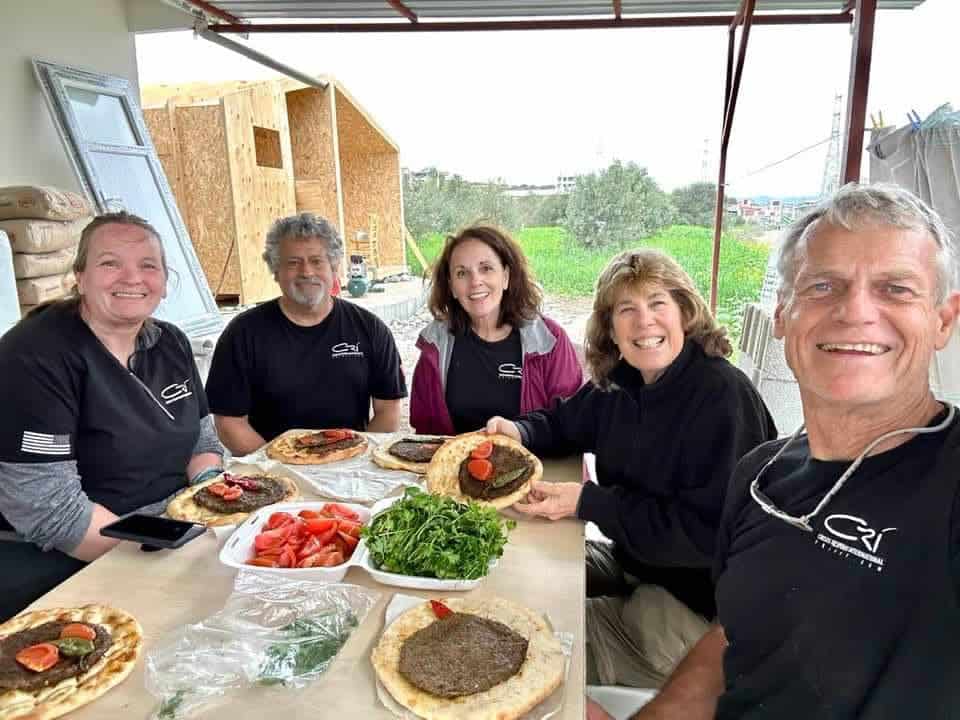
Deb and her team worked to build homes and temporary structures. They hauled and lifted and hammered – hard physical labor – but they also sat among the ruins and listened over tea or coffee.
“On every deployment, my heart is full yet shattered at the same time.” Shattered because of the suffering all around. “Everybody is vulnerable. Everybody is desperate. Sadness, depression and suicide fill the atmosphere. Yet, I also find myself full-hearted because it is obvious God is transforming and empowering lives as we extend our hearts to help. This is the expectation God has for us.”
What Is Compassion?
Compassion comes from the Latin “com” (with or together) and “passion” (suffer). To suffer with. (Merriam Webster) “Compassion and empathy both refer to a caring response to someone else’s distress. While empathy refers to an active sharing in the emotional experience of the other person, compassion adds to that emotional experience a desire to alleviate the person’s distress.”
Scripture tells us to be compassionate.
“Be kind and compassionate to one another, forgiving each other, just as in Christ God forgave you.” — Ephesians 4:32
“Be like-minded, be sympathetic, love one another, be compassionate and humble.” 1 Peter 3:8
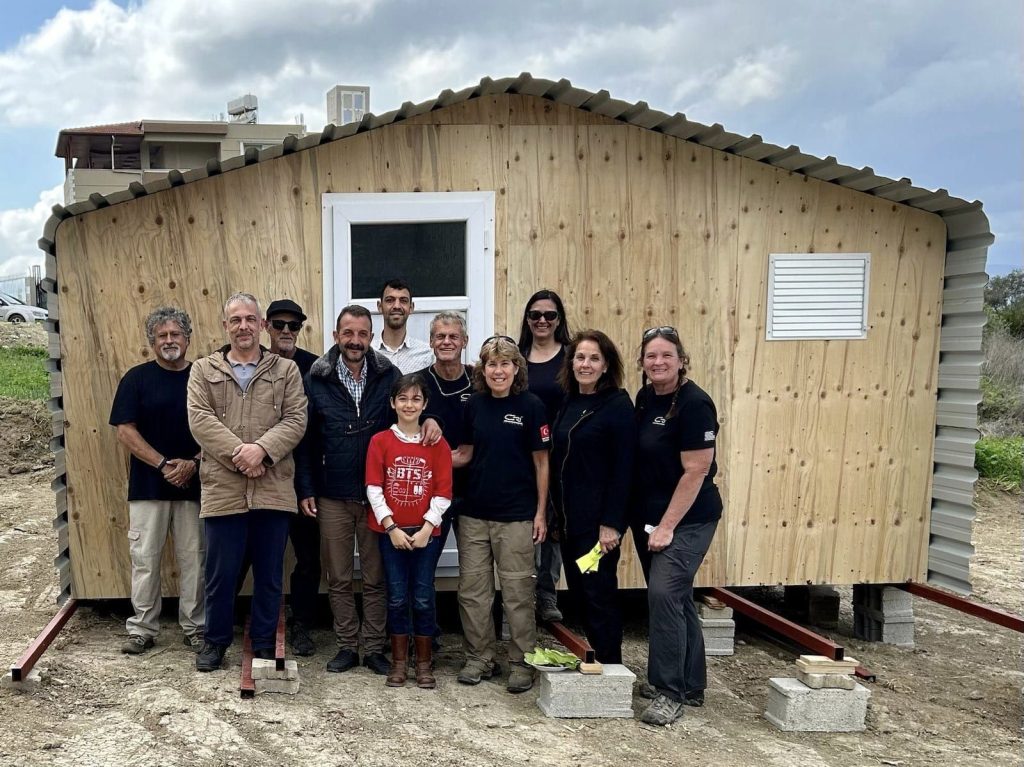
The Joy of the Lord
For two to three weeks at a time, Deb lived with what she could carry on her back – clothes, sleeping bag, toilet paper, Bible. And to prepare herself, she prayed. And prayed.
“Our western culture is so removed from tragedy. We can’t begin to relate to why a mother would want to put her child in a boat. They call the Aegean Sea ‘Death’s Grip.’ So many don’t make it.
“We don’t want to suffer – even vicariously – but God keeps putting stuff in front of me. He wants me there. He opens doors. He makes it amazing. When he says, ‘Jump,’ I jump. When he says, ‘Duck,’ I duck. I’m walking with God. I’m in rhythm with him.
“I have to experience God like this. It enriches my soul, my life.”
And, in the process, Deb says, she finds commonality with “the others.”
“People are harder to dislike, avoid or disregard when you find common ground. They, too, love their children; they want them to be safe. They are discouraged and desperate for help. No different than you or I. If I were in dire circumstances as they are, I most certainly would want someone to extend heart and hand.
“Caring for others opens up things in your own life. I move into suffering because I know I will find Jesus there.”
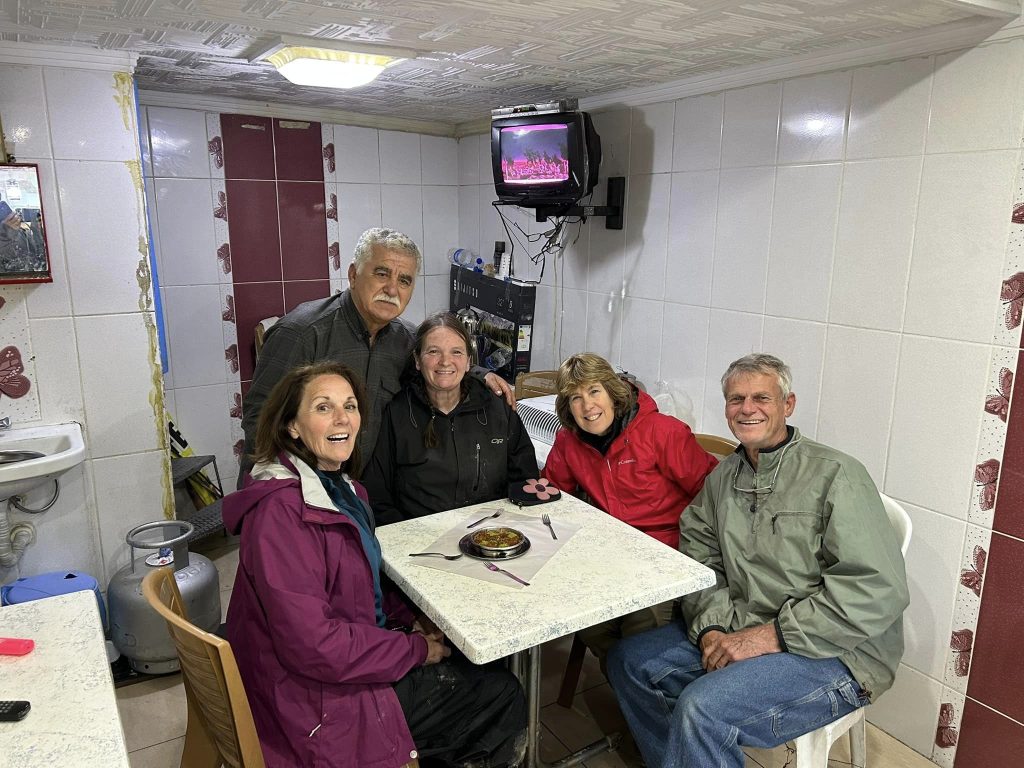
Not everyone is called to go physically into war-torn, earthquake-ravaged countries to administer aid, but everyone is called to care, to be compassionate. What is your role?
Let’s Learn About: Refugees
We are reflecting this month on Independence Day and the freedom that has attracted people to the United States. At World Relief Memphis, we often reflect on America as a country of immigrants and displaced persons. Throughout the generations, people have immigrated to the U.S. and established new lives. That continues today!
Refugees are just one of these immigrant groups.
The amount of competing information around immigration can be overwhelming. But World Relief has been welcoming refugees and other immigrants in partnership with churches and compassionate individuals like you since the 1970s, and for over 10 years here in Memphis!
World Relief Memphis specifically assists those who are seeking safety through various pathways established by the United States Government. In this five-part series, with help from our Initial Welcoming Services and Newcomer Outreach Service teams, we will be sharing the various different legal pathways to the U.S., how those pathways began, how we come alongside new arrivals, and how you can join us in welcome.
History
Refugees are one of the primary groups of people World Relief serves worldwide. To understand who they are and our role in the refugee resettlement process, lets take a look at World Relief’s history alongside legislation in the United States.
1940’s
1944 – The War Relief Commission of the National Association of Evangelicals (NAE) is founded in NYC for churches to address urgent humanitarian needs in war-torn Europe.
1948 – U.S. Congress enacts the “Displaced Persons Act of 1948” following the admission of more than 250,000 displaced Europeans from World War II (State Dept.).
1950’s
1950 – The War Relief Commission changes its name to World Relief Commission of the NAE
1950 – The United Nations establishes the High Commissioner for Refugees (UNHCR), also known as the UN Refugee Agency to “act as guardian of the 1951 Convention Relating to the Status of Refugees, which defines the legal protections for refugees” (USCIS).
1951 – The International Organization for Migration (IOM) was created. Originally called, “Intergovernmental Committee for European Migration,” as they were birthed from the migration crisis following WWII, IOM serves refugees in a similar capacity to the UNHCR (IOM).
1970’s
1972 – World Relief cares for 100,000 war-displaced people in Vietnam through it’s network of missionaries and church partners
1975 – World Relief provides food and medical care in Cambodia for refugees fleeing the Khmer Rouge genocide.
1979 – World Relief launches its refugee resettlement ministry through a network of church partners, helping Vietnamese boat people adjust to life in America. World Relief is the only evangelical agency authorized by the US State Department to resettle refugees.
1980’s
1980 – Congress passes the Refugee Act – “standardized federally-supported resettlement services for all refugees admitted to the United States” (State Dept.). The Act included the definition of refugee and gave instruction for “regular and emergency admission of refugees of all nationalities” (USCIS). It “provided the legal basis for the establishment of The Office of Refugee Resettlement at the Department of Health and Human Services.” This Act is establishes the annual Presidential Determination, setting the annual number of refugee admissions.
2000’s
2005 – The U.S. Citizenship and Immigration Services (USCIS) is created as a part of the Department of Homeland Security and “oversees refugee and asylum affairs” (USCIS). Their officers are “specifically-trained refugee officers who travel around the world to interview refugee applicants seeking resettlement in the United States.”
2012 – World Relief opens offices in Memphis to work with area churches and community partners to create a community of love and welcome for refugees.
*Want a more in-depth history of World Relief, immigration laws, and the resettlement process? Take our free workshop course here
The U.S. Refugee Resettlement Process
With that history, consider resettlement from the milestone of receiving official refugee status to arrival in the U.S.
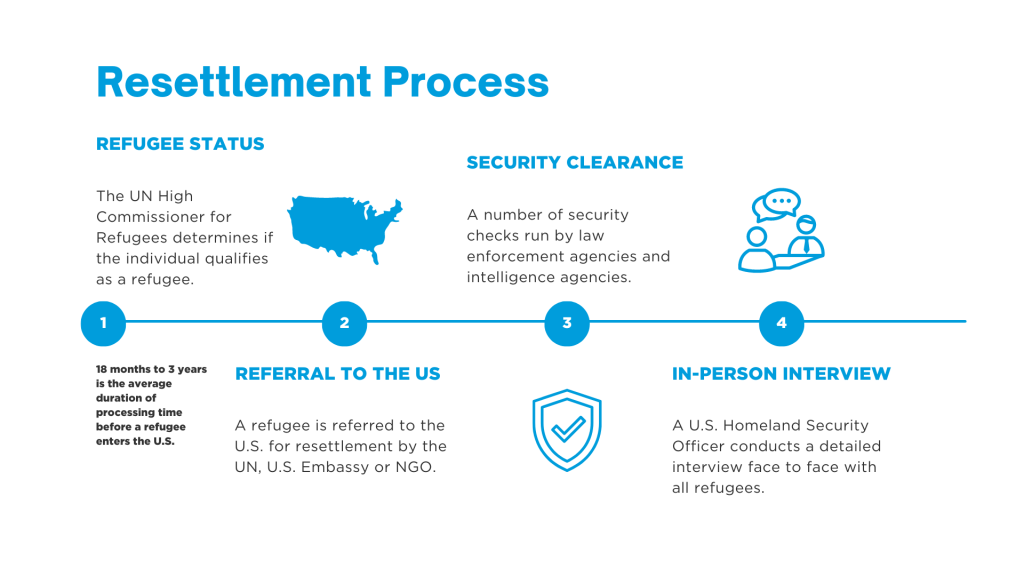
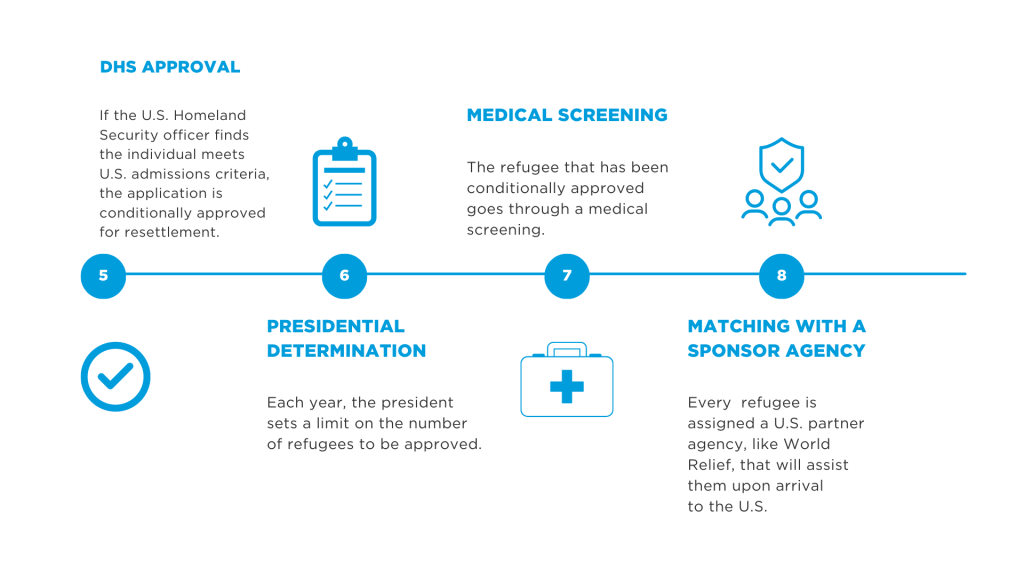
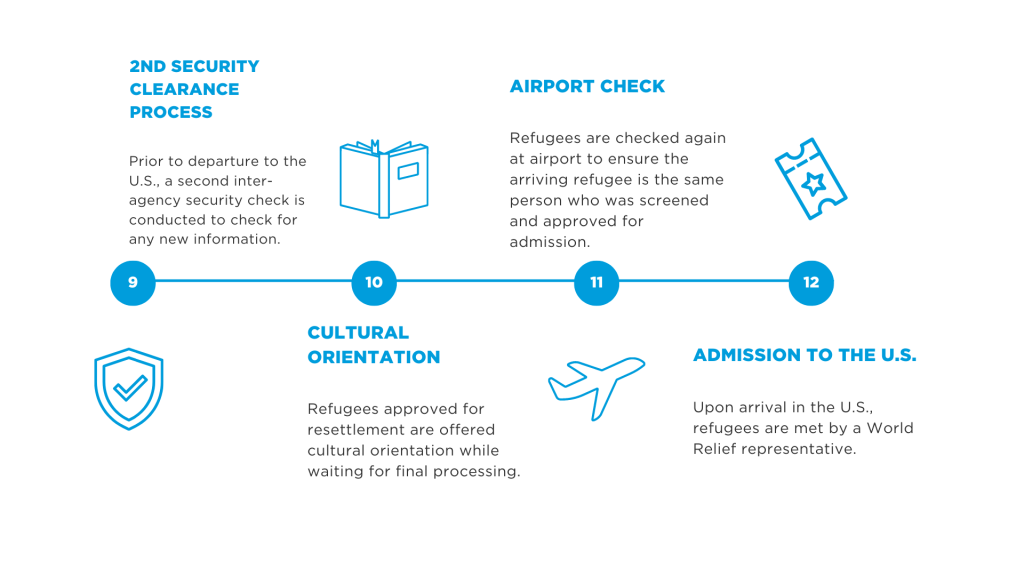
What We Do
Once a refugee is approved by the State Department, they are matched with a resettlement agency. World Relief Memphis is notified of a pending case through our Home Office and accepts the case.
In the days or weeks between this notification and the refugee’s arrival, our Initial Welcoming Services (IWS) team gets to work. A caseworker is assigned and is given access to the case specifics, including a general background of who is coming and if they have specific needs to be considered.
Simultaneously, our Church and Community Engagement staff is recruiting a volunteer Good Neighbor Team of 8-10 individuals to match with the new arrivals.
The caseworker then collaborates with our housing manager to find an apartment or rental house and with the volunteers, sets up the space with required necessities, sourced from donations or by purchasing through a portion of the incoming case’s Refugee Cash Assistance.
Arrival day is exciting! The Good Neighbor Team and IWS staff gather at the airport to provide a warm welcome and to celebrate this milestone. But over the next three months, there are many integration steps that individual or family must overcome. Our caseworkers aid their program participants in registering for their Refugee Cash Assistance, Social Security Card, Medicare, SNAP, and other elible government assistance programs. These programs are key for helping refugees in becoming self-sufficient.
Other vital steps in these first 90 days are the cultural orientation to the U.S., budget meetings reviewing travel debt, the currency system, and how to pay rent/ bills. The volunteer Good Neighbor Team is reinforcing these same principles as they go grocery shopping with a family, support budget planning, or help them practice talking with their landlord.
Once the initial 90 day period nears an end, clients may be matched with other volunteers and enrolled in eligible programs for extended case management:
- Economic Empowerment: aids in job readiness, application process, and placement.
- Holistic Support Services: aids clients in health and wellness goals, especially clients with additional vulnerabilities
- Refugee and Immigrant Youth Services: provides school enrollment services, group mentoring, and one-on-one mentoring where refugee and immigrant youth learn how to set and meet goals in their personal, school, and post-school life.
- The Connect Language Center: English as a Second Language (ESL) program open to program participants and the general public. Here students are enrolled in ESL classes of varying levels depending on starting knowledge.
How You can Help
The resettlement process is not a simple one, and it certainly doesn’t end at arrival. While we might be tempted to look away, the love of Christ compels us to turn toward the need — to consistently and lovingly step toward those who are hurting. If you’re like us, you’re asking yourself: How can I make a difference and create lasting change when the problems in the world are so big?
The good news is none of us has to take this journey alone. World Relief Memphis has been present and working in this city for the past 10 years and is equipped with 80 years of connections and expertise through the World Relief’s global network. We have been partnering with you, the local church and community to make Memphis a more welcoming community.
Here are 4 ways you can be a part of lasting change:
- Learn: There is always something to learn in the refugee resettlement world as we just displayed. World Relief Memphis has a Workshop with courses to learn more about cross-culture friendships with our newest neighbors, reflections on biblical thoughts about immigration, and more!
- Advocate: The immigration system is broken and you have a voice to change it for the better! Check out our Advocate page to see how you can share your voice on issues like passing the Afghan Adjustment Act, creating a just path to citizenship for Dreamers and other long-term immigrants, protections for Ukrainians, Asylum seekers, and more.
- Volunteer: Want to walk alongside individuals and families here in Memphis? Check out our volunteer page to see what opportunity is right for you. You can do everything from apartment set ups, driving clients to ESL classes, mentoring refugee and immigrant youth, to bring in a Good Neighbor Team where you get to welcome and walk alongside a refugee family for the first 6 months of their time in the U.S.
- Give: When you give to World Relief Memphis, whether it be once or monthly, monetarily or gift in kind, you are making a big difference in the lives refugees and other immigrants in vulnerable situations.

Writer: Kara Spencer
Communication Coordinator at World Relief Memphis, graduate of Harding University, & Memphis native.
If you would like to learn more about World Relief Memphis in the coming months, follow us on social media and sign up for our newsletter to stay up to date on events and volunteer opportunities.
If you are searching for an opportunity to begin making a bigger impact, join our new monthly giving program, The Path, for exclusive updates, virtual events, prayer chains, and stories of hope from the women, men, and children whose lives you change.
Raise Your Hand if You’re a Mama!
By Lisa Zanoni, World Relief Spokane Relationship Manager
Raise your hand if you are a mama! Or have a mama. As a mother, or parent, we want our children to be safe and happy. Many of us have made the decision to move away from our family. The reasons are vast: we fall in love; we get a job transfer; we go to college and just never return to our home. I am a southern gal, born and raised in North Carolina. In southern culture, children, especially daughters, don’t venture far from the nest. I am an exception. I fell in love, married a man, and moved to Spokane 29 years ago. I know I ripped my mama’s heart out of her chest. The saving grace was the knowledge that I knew I would be visiting my family frequently. I had, and I still have, the freedom to buy a plane ticket and go home anytime I please.
But what if seeing my family wasn’t even remotely a possibility? What if that tear-laden, heart-wrenching goodbye in 1994 was the last goodbye?
I want to introduce to you Hamsa, Masar, and their three precious daughters. Here is her story of heartache, success and a beautiful reunion!
“My husband, Masar, 14-month-old daughter, Lina, and I moved to the United States in January 2013 as immigrants from Iraq through a program called *Special Immigrant Visa (SIV). Masar and I both worked as contractors for the U.S. government as interpreters. Subsequently, our lives were under threat during the widespread civil war and the harsh service conditions in Baghdad. Threats on our lives for serving with the U.S. military had become too common. The decision to leave Iraq was made when we came home to a gift-wrapped bullet on our front porch. Knowing everything and everyone we would leave behind; this was not an easy decision to make.
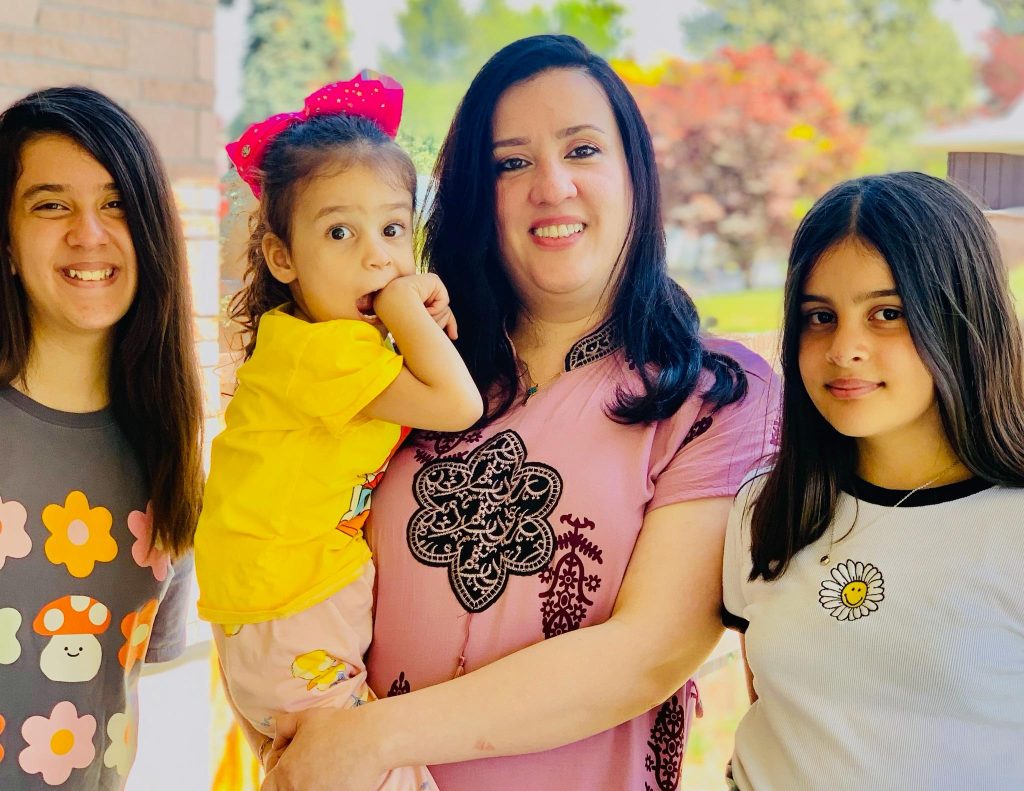
Due to the lack of security for our family, and fear of the retaliation that might be taken against my family, I was unable to tell anyone about my plans. I couldn’t even tell my mother. Keeping that secret from her was extremely difficult, but I knew that in order to keep her and my siblings safe, I dare not say a word. Therefore, I told my mother a week before my flight to the United States. We cried as we held each other close, knowing full well that this was probably the last time we would see each other, hug each other. The last time she would see her granddaughter. She was not ready for the separation, but at the same time she wanted a safe and better life for me. She knew she had to let me go in order for me and my little family to live. The day I said goodbye to her and my four siblings was one of, if not the, hardest day of my life.
We flew to US in January 2013, and I still vividly remember the day we arrived in Spokane ten years ago. It felt like magic where Christmas decorations were still being displayed everywhere. I was as excited as a child about our new life! World Relief and especially Lisa West-Zanoni played a great role in my life here from day one to this moment! They assisted us in the resettlement process and helped us to adapt to the new environment. In fact, World Relief staff treat immigrants and refugees as family members or friends. This had a huge impact on me and my family when we arrived to Spokane. Therefore, I am thankful to them. I also would like to give special thanks for Lisa West-Zanoni who was and is still there to support and encourage me as wonderful mother, sister, and friend!
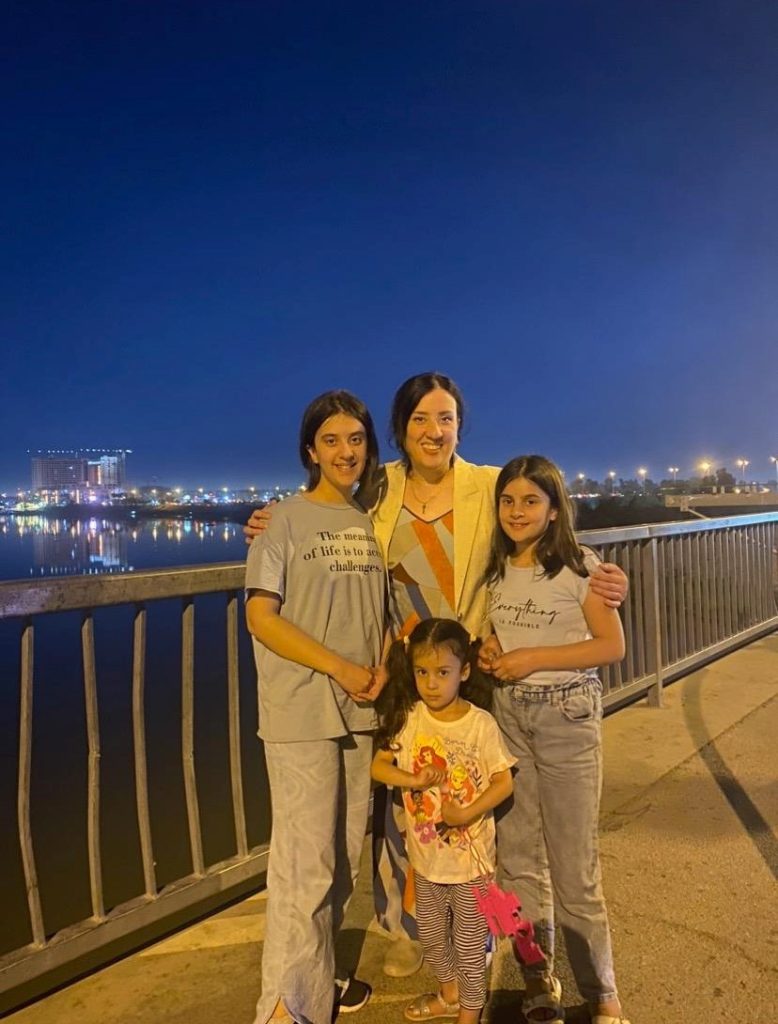
My life in the United States has been challenging and blessed. I encountered multiple obstacles in my life and education journey. I got discriminated against because of the hijab/head scarf that I used to wear. I once was told to speak English at a bus stop. This did not prevent me from going to school. I hold a bachelor’s degree in English from University of Baghdad, and I was determined to continue my education in America and get a job to serve my community. I enrolled in the Vascular Ultrasound Program, and soon after, I got my US citizenship and graduated with an AAS degree! And I have been working in the field for about five years now. Masar and I bought our first house, and our daughters are happy and safe.
Despite our wonderful lives in Spokane, during the past decade, my family was ever present in my thoughts and heart. As primary SIV holder, my husband was able to bring his family to the U.S. As wonderful as it is to have my in-laws here, I was still so desperate to see my mother and for my mother to see her granddaughters. She had not met the two younger girls who were born in Spokane and had watched Lina grow up via FaceTime. I invited my mother and sister to come and visit me on a visitor visa in 2022. Unfortunately, they got rejected. After much discussion with my husband and reports that Baghdad had increased security measures in place, I decided to go to Baghdad and visit them in April 2023. However, I was nervous to go back. Would I be safe? Would I put my family at risk? My longing to see my mother, siblings, and relatives was too overwhelming, and I decided I would trust reports I had heard and take that chance.
The moment I stepped off of the plane and into my mother’s arms confirmed that I had made the right decision. I had four weeks to make up for ten years of separation, four of the most joyous weeks of my life. Very quickly my security fears abated, and instead, stories of missed birthdays and weddings were shared and priceless memories were made. I spent a lot of time just sitting with my mother, cherishing every moment with her. As I closely examined her face and hands, I thought to myself how she had aged. At times, I felt cheated for the hand that had been dealt me and that I was missing these years with her. I knew that she would have it no other way. She had peace knowing that I was safe.
My mother is an amazing cook, and we spent a lot of time enjoying her food. I felt safe as I walked around Baghdad and was thrilled to see rejuvenation occurring. My heart was full as I watched my daughters play with their cousins they had never met. I was thrilled for them to experience their culture that was all around them! It was good to be home and to be surrounded by familiar things that I have missed. But especially to be with my mother.
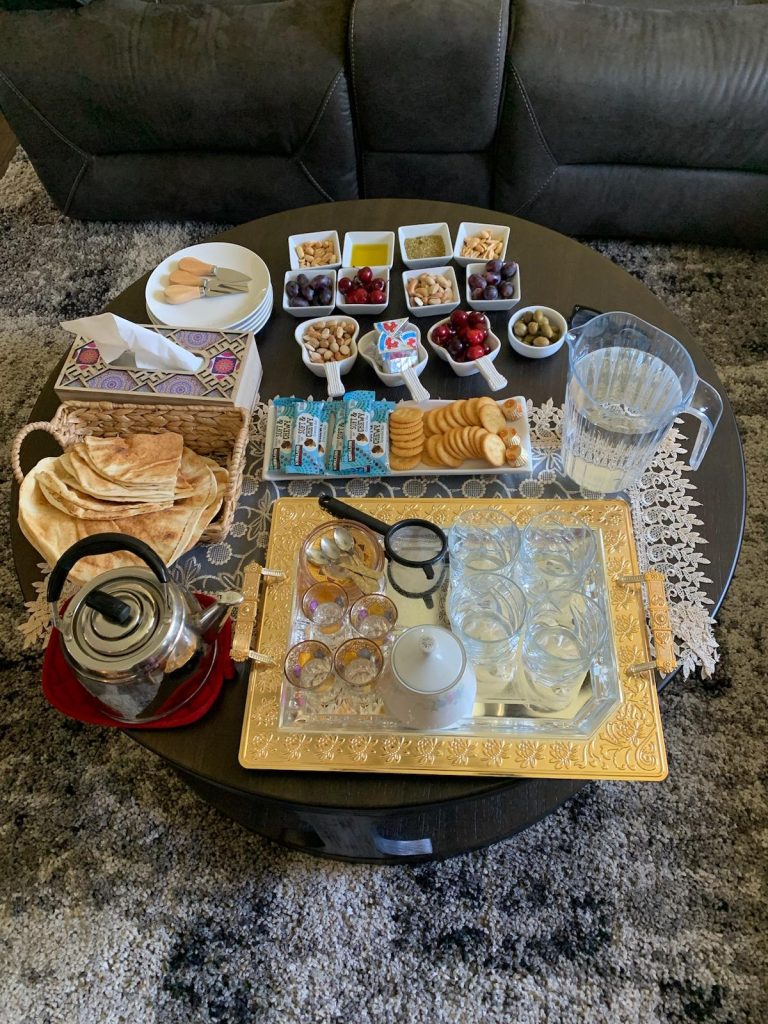
Those four weeks passed far too quickly. There wasn’t enough time. There is never enough time when it comes to our loved ones. The goodbyes this time although difficult, were not hopeless as before. As I left Baghdad and headed to my U.S. home, I was filled with love and encouragement, knowing that this was not the last goodbye.
I don’t know what the future holds for my family, but I am going to do my best to make this trip every couple of years. War, fear and persecution can tear our lives apart, but nothing will ever separate my mother’s love from my heart.
As we discuss the lives of those from Iraq and their struggle, please consider making a donation to support those coming to Spokane for a new life.
*SIV is a program for Iraqi and Afghan nationals who served alongside or worked with the U.S. government. SIV recipients legal permanent residents of the United States.
10 Books to Read This Summer
If you’re anything like me, you love a good book list — especially for summer. The sun is brighter and the heat invites us to bask in the delight of a season that reminds us to rest and make space for fun. I recently asked my co-workers at World Relief what books they’d recommend for our summer reading list and today, we’re sharing a few of those recommendations.
Whether you are looking for a book to read poolside, on your next flight or at home in the cool evening, we hope this list of varied experiences and notable voices helps engage your mind and your heart this summer!
“We read to know we aren’t alone.” C.S. Lewis.
- Americanah by Chimamanda Ngozi Adichie – Chimamanda’s fictional story about a Nigerian couple separated by war, forced to take separate paths in completely different countries while boldly commenting on today’s realities in race and class promises to leave you different than when you began it. It’s no wonder this book made it onto countless Best Book of the Year lists.
- Beyond Welcome: Centering Immigrants in Our Christian Response to Immigration by Karen Gonzalez – Former World Relief staff member, Karen Gonzalez reminds us how centering immigrant voices when discussing immigration is not only important but critical to following a gospel-centered approach to how we advocate for, vote on and learn about the marginalized. A must-read for anyone looking to take their advocacy and solidarity to a deeper level and a top resource we recommend in learning about refugees and other immigrants.
- Creating Cultures of Belonging: Cultivating Organizations Where Women and Men Thrive by Beth Birmingham and Eeva Sallinen Simard – Co-written byWorld Relief’s very own, Eeva Sallinen Simard, this book explores how faith-based organizations can create and sustain a safe work environment for a diverse workforce to flourish. With practical steps and solutions, Creating Cultures of Belonging will inspire you to bring change and best practices to your own organization.
- Everything Sad is Untrue by Daniel Nayeri – This young adult autobiographical novel has won countless awards for its immense heart and masterfully written storytelling. It tells the story of Daniel and his family’s journey as Iranian refugees seeking asylum in the U.S. after his mother embraces Christianity. Daniel shares what it’s like to cope with forming his identity while navigating a new culture in a new world.
- His Testimonies, My Heritage: Women of Color on the Word of God by Kristie Anyabwile – This inspiring collection of stories written by women of color from different cultural backgrounds will leave you in awe of God’s intentional purpose for his daughters. As a Latina Christ-follower, these words ministered to my whole self and reminded me of how a good God perfectly created us to do his work in a multicultural and diverse world.
- Social Justice for the Sensitive Soul by Dorcas Cheng-Tozun – Often times when we think of advocacy or working in social justice, we think of loud marches or individual voices speaking out to the masses. While that is a small part of it, Dorcas highlights the vital role the quiet observers and thinkers play in the pursuit of justice while freeing us from the myth of an ideal activist.
- The Stranger At Our Shore: How Immigrants and Refugees Strengthen the Church by Josh Sheriff – Josh shares his personal story of leaving Islam as a child into a new life in Christ while speaking into a new vision of what missions can look like and discipling to people different from yourself. I’ve had the pleasure of witnessing Josh’s commitment to God’s people when he was a pastor at a local church in Chicago. I know that anyone who reads this book will glean so much wisdom from his experience and devoted heart.
- The Next Worship: Glorifying God in a Diverse World by Sandra Van Opstal – Worship does not look any one specific way. If we are joining together in church with God’s creation in mind, then our worship is full of all tribes and all nations- honoring the many ways he has made us to glorify him. Sandra dives deep into what that looks like and her expertise will convict you into bringing this wisdom to your church, your life and your own worship.
- This Here Flesh by Cole Arthur Riley – This book of reflections and life lessons from Cole’s family history while written in prose, is pure poetry. Cole’s writing will remind you of the beauty of the written word and her insights will serve as a balm to your soul. If you only read one book this summer, let it be this one.
- Thou Shalt Not Be A Jerk: A Christian’s Guide to Engaging Politics by Eugene Cho Gear up for the upcoming election season by learning how to engage in healthy and graceful (God-centered) political discussions. Eugene’s book boldly confronts the challenges we face today in talking about why politics matter, how to live out your convictions while loving the very people you disagree with and how those convictions should be Bible-centered vs. directed by political party agendas.
Enter the Summer Book Giveaway
This summer we are giving away 3 books from the list above. Fill out your information below for a chance to win!

Jessica Galván is a Content Writer at World Relief. She is passionate about storytelling and amplifying diverse voices to reveal the beauty of God’s creation. She is also the Editorial Director for Chasing Justice and prior to World Relief, she was a freelance writer and editor for a variety of clients in publishing, most recently Penguin Random House. When she isn’t wordsmithing for the pursuit of faith and justice, she is spending time with her husband and their 3 children in the Houston, TX area.
Left in Limbo – The State of the Afghan Community after the U.S. Military Withdrawal
On August 15th, 2021, years of preparation came to a close as the United States military began to withdraw from Afghanistan. Intelligence specialists estimated that it would take a minimum of six months for Kabul to be captured by the Taliban. It took them 11 days. Thus began two weeks of chaos.
On August 31st, the U.S. declared its withdrawal complete and closed its embassy in Kabul. As part of its withdrawal, the U.S. military helped evacuate 78,000 Afghans out of Afghanistan. This rushed and dangerous evacuation left tens of thousands of Afghans behind and tore families apart. Today, the Afghan community in and out of the U.S. is forced to deal with long and confusing procedures. All they want is to see their family and the guarantee of a stable future, but this is much easier said than done.
What has been going on with the Afghan community since the withdrawal? Here is an overview and timeline of events so we can better understand and advocate for the Afghan community.
U.S. Bureaucracy Struggles to Keep Up Post-Withdrawal
On September 3rd, the Department of Homeland Security (DHS) announced “Operation Allies Welcome.” This new program was meant to resettle and support Afghans involved in the large-scale evacuation effort. Due to this new operation, tens of thousands of fleeing Afghans were granted humanitarian parole.
What is humanitarian parole and how was it used in Afghanistan?
Humanitarian parole is a way for the government to protect foreign nationals in emergency situations. It serves as a rapid way to let someone stay in the United States and work there without going through the complicated bureaucracy of the immigration system. United States Citizenship and Immigration Services (USCIS), the organization responsible for managing immigration status, quickly granted parole to 74,500 of the 78,000 evacuating Afghans. Due to the chaotic and urgent nature of the situation, USCIS did not have many other options.
On average, humanitarian parole lasts two years. During this time, parolees cannot be deported, and they have the right to work. Once those two years are up, they are either sent back to their country, or USCIS can extend their parole. Since August 2021, thousands of Afghans have been stuck waiting, trying to rebuild their lives between this two-year status. They simply hope that they won’t be sent back.
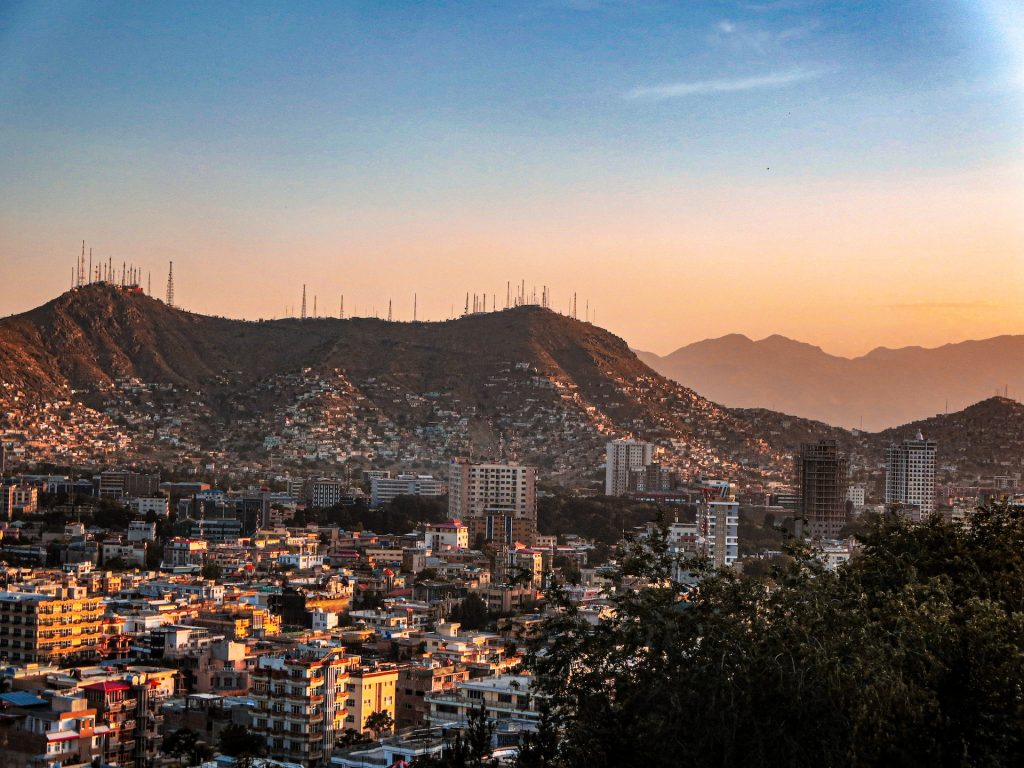
How did USCIS manage the crisis after the withdrawal?
Once the Taliban took back control of Kabul, USCIS began receiving an overwhelming amount of parole requests.
USCIS was not prepared to process Afghans that weren’t included in the initial evacuations. Those that were left behind had to wait. In September, their calls for help were put on hold. It took USCIS four months to adapt its processing procedures.
From January 2020, as the U.S. government began preparing its evacuation, to April 6th, 2022, 8 months after the withdrawal, USCIS received 44,785 total applications for parole. They processed 2,633. They accepted only 114. In total, because of the $575 fee attached to the application, USCIS received over $19 million.
As of 2023, this number of applicants has risen to 49,000 with a total of 410 approved. To make matters worse, about 70% of Afghans applying for parole are still within the country. The U.S. government no longer grants parole to those at the border– they must be outside of the United States. Every extra day they wait for a decision is a day they live under the threat of death.
Special Immigrant Visas
Certain Afghans can apply for Special Immigrant Visas (SIVs). An SIV is a special visa given to Afghans who put themselves under a security risk to interpret or otherwise be employed by the U.S. military. With this visa, Afghans can seek permanent residence and citizenship in America. Often, Afghans who qualify for SIVs are in dangerous situations. The Taliban views them as traitors and many SIV-eligible Afghans have been killed or are threatened by the Taliban.
The Problem with SIVs
The SIV program is in as much disarray as the parole program. Even before the U.S. withdrawal, there was a backlog of approximately 18,000 SIV applications. As the list kept growing, the understaffed Afghan SIV program couldn’t keep up. Internal reports found that it takes roughly 734 days to process an SIV application as of 2022— just over two years.
The latest report from the Department of Homeland Security found that there were about 74,000 applicants waiting for a decision on their SIV status. Even worse, these applicants are in the very early stages of the application process. They are waiting for the Afghan Chief of Mission to approve their papers and confirm that they did work with the U.S. military– step number four of an 11-stage process.
Additionally, there are only 17,000 SIVs left to give out. Like other immigrant visa programs, the State Department puts a cap on the number of visas it can give out. Once USCIS reaches this cap, there is no way for additional Afghan allies to benefit from this program. However, the State Department can raise the cap, which it has previously done. In December, the State Department added 4,000 visas to the total. Nevertheless, we are still far away from addressing the tens of thousands of Afghan allies.
SIV Applicants Face Another Issue
The SIV application process holds another hurdle. On August 31, 2021, the U.S. embassy in Kabul suspended operations. Therefore, SIV applicants are forced to leave the country; after a certain point in the process, they must show up at a U.S. embassy in person for an interview. Leaving Afghanistan can prove to be quite difficult, especially for an SIV applicant who may already be threatened by the Taliban.
While many SIV applicants were paroled out of Afghanistan during the initial evacuation, many were left behind. So many allies who put their lives in danger were simply abandoned.
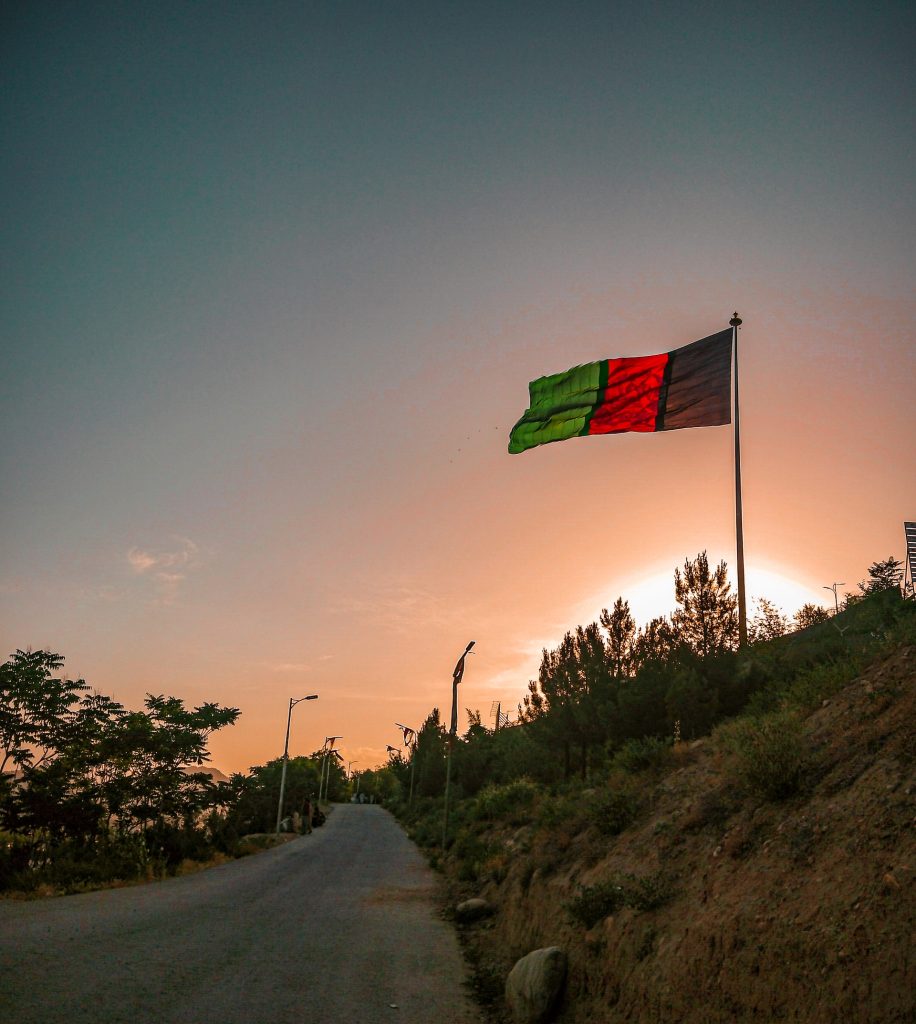
Afghanistan Becomes Eligible for Temporary Protected Status
In March 2022, USCIS announced the designation of Afghanistan as TPS-eligible. Temporary protected status (TPS) is similar to humanitarian parole. When a country is facing conflict that would make it unsafe for its citizens to return, the secretary of the Department of Homeland country can declare that country and its citizens eligible for TPS.
Then, USCIS hears cases from different eligible individuals and grants them TPS. It protects them from deportation for 18 months and grants them authorization to work in the United States. It’s very common for USCIS to extend TPS, just as it can extend parole. However, just like parole, there is no path to citizenship or permanent residence in the United States. It’s another short-term solution.
It’s important to note that TPS only applies to foreign nationals who are present in the United States. Afghans outside of the U.S. can’t apply for TPS. Only those in the country before March 15, 2022 – the date Afghanistan became eligible – can receive this status. While great for the Afghan community in the U.S., those left behind can’t benefit. Their only options are to apply for backlogged parole, SIV status, or asylum.
Afghans can also have multiple statuses at the same time. The majority of Afghan TPS holders are also parolees. While it may seem redundant to be a parolee and TPS holder at the same time, it grants Afghans extra protection from deportation.
Family Reunification
In January 2022, the State Department announced a new form that would allow Afghans to apply for family reunification. There are procedures for SIV recipients to have their families join them, but these channels are also significantly backlogged. However, for those granted humanitarian parole or TPS, there was no way to reunite with their families until January – unless their family members were also individually granted an immigration status. This new form allows the applicant to reunify with their spouse and unmarried children under 21.
Regardless, Afghans must once again face the bureaucracy of our immigration system just to see their family again. Who knows how long it could take, or what could happen in the meantime?
Extending Humanitarian Parole
This June, USICS announced a new program to let Afghans apply for re-parole, extending their humanitarian parole and letting them live in the U.S. for another 2 years. They’re actively examining each case and seeing if Afghans are eligible for re-parole. This time, Afghans are also exempt from the $575 fee. While this is a good step in assuring that Afghans can stay in the U.S., it’s another short-term solution.
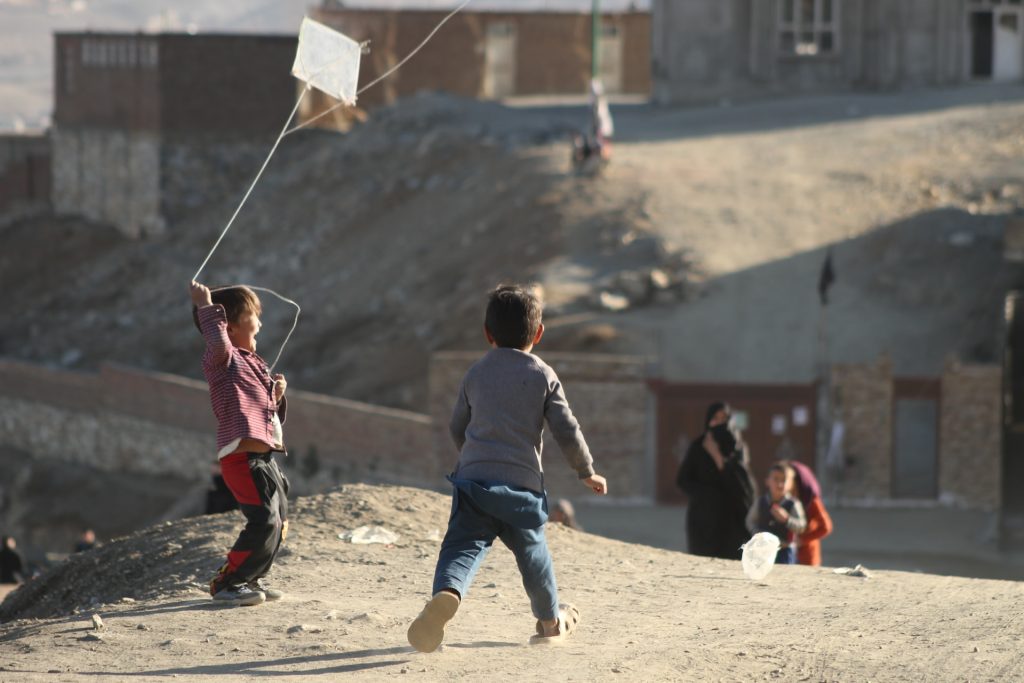
What Does the Situation Look Like for the Afghan Community Now?
There are Afghans who have been U.S. citizens for years or are already lawful permanent residents. They came to the U.S. long before the military withdrew from Afghanistan. Their family and loved ones are stuck waiting for a decision on their parole or SIV case and fear for their lives.
There are Afghans who were granted parole and TPS. They just began their application to renew their parole status for another two years. While they can live and work in the U.S., they have no guarantee of what their future will look like in two years— they have no path to citizenship. Those who qualify for SIV or asylum brave our immigration system and its eternal wait times. They’ve applied for the new family reunification program and wait to see if they’ll be reunited with their families back home.
As the U.S. government rolls out short-term after short-term solution, Afghans have no other choice but to wait—in limbo.
Hear the stories of Sayed and Hashemi, two Afghans living in Spokane.

Antoine Herrbach is a 2023 Summer Intern for World Relief. He is a Senior at Gonzaga University, studying Political Science, History, and Economics.
Why is the Path Vital to Resettlement in the Fox Valley?
The Path is one way that community members partner with us in this important work of welcoming refugees through giving a monthly gift.
Read about one of our Pathmakers today and what drew her to this work.
How did you get connected with the work of welcoming refugees?
It started years ago when I was hearing so much in the news about displaced people. It felt
uncomfortable to hear that news and then turn off the TV and return to my regular life. I started to
research online about different organizations who had boots on the ground in helping people. There are lots of good organizations doing good work. I wanted to be a part of their work and decided to offer financial support. I found World Relief, which has a local office and was also located in places around the world where people desperately needed help.
Why did you decide to join the Path?
Looking at it from two different angles I decided to join World Relief because, after researching, I felt good about supporting their work. And I wanted to give monthly because it meant my giving would be consistent and I wouldn’t ever forget to give.
What motivates you in welcoming refugees?
Reading through the Old Testament I was surprised by how many times God commands his people to care for the widow, orphan, and the sojourner. By welcoming refugees, I am complying with God’s teaching. Refugees leave their home country out of necessity, not by choice. I think that as a Christian I am called to respond to that need.
How do you think you have changed since becoming involved in this work?
I have become much more compassionate to people who are different from me—different nationalities, experiences, and religions. It’s good to be different. I was more judgmental of people who were different or thought differently from me, but now I have more compassion and understanding of people with different backgrounds. I appreciate how people can bring different cultures into my world. People who think differently help a community to stretch and grow.
Do you have any advice for someone who wants to help but doesn’t know how?
Take a step in a direction and see where it leads. It’s hard not to be frozen by indecision and not know what to do. After all, what can one person do in the face of so much global conflict and disaster? After taking the first step you will be able to take another. One person can’t create change on their own, but change will happen when we work together.
How can you learn?
I try to keep things local. Try to learn about what is going on in your community that you can be a part of. Do some research online. Be willing to get to know people in your community who are different from you. And as you work with others who may disagree with you, always be kind and be open to other points of view. For people who are readers I recommend the book, “Inalienable” written by Matthew Soerens.
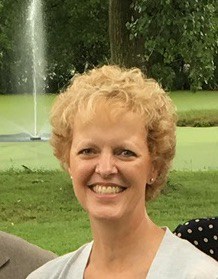
Join the movement and become a Pathmaker today!
World Relief Cup 2023
“When I walked into World Relief, I received way more than what I expected.”
—Bertrand
Celebrating World Refugee Month
Bertrand, a Career Pathways Coordinator, shared his experience at the World Relief Cup, as a participant who was resettled through our office.
“When I look back at my journey as a participant being resettled by World Relief, I am humbled and will forever be grateful for the opportunity for a fresh start…Today I am [able to be] World Relief to new famil[ies] walking through our doors. There are many great resettlement organizations out there but only a few do this work from a posture of servants and advocates.”
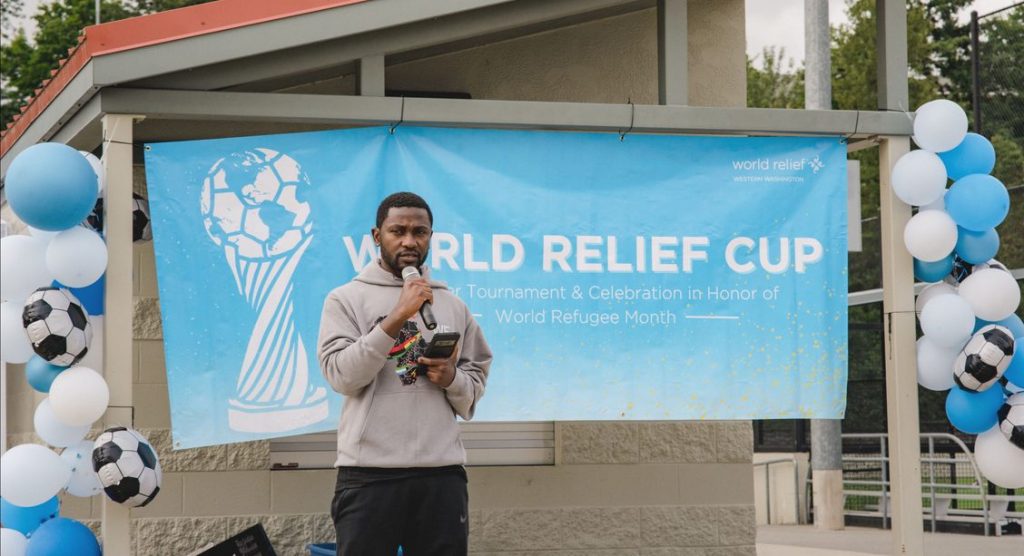
Bertrand shared his story as an asylee and being a recipient of the Match Grant program. He expressed his deep gratitude to the people who partnered with him from World Relief, like his case worker Jacob and the employment team.
As a staff member, he is proud to have the opportunity to now walk alongside participants on “the road to independence and a holistic self-sufficiency”.
We are so grateful to have individuals Bertrand on the World Relief team! Bringing his experience to his work, he is a part of creating lasting change for every refugee and immigrant.
More from the World Relief Cup
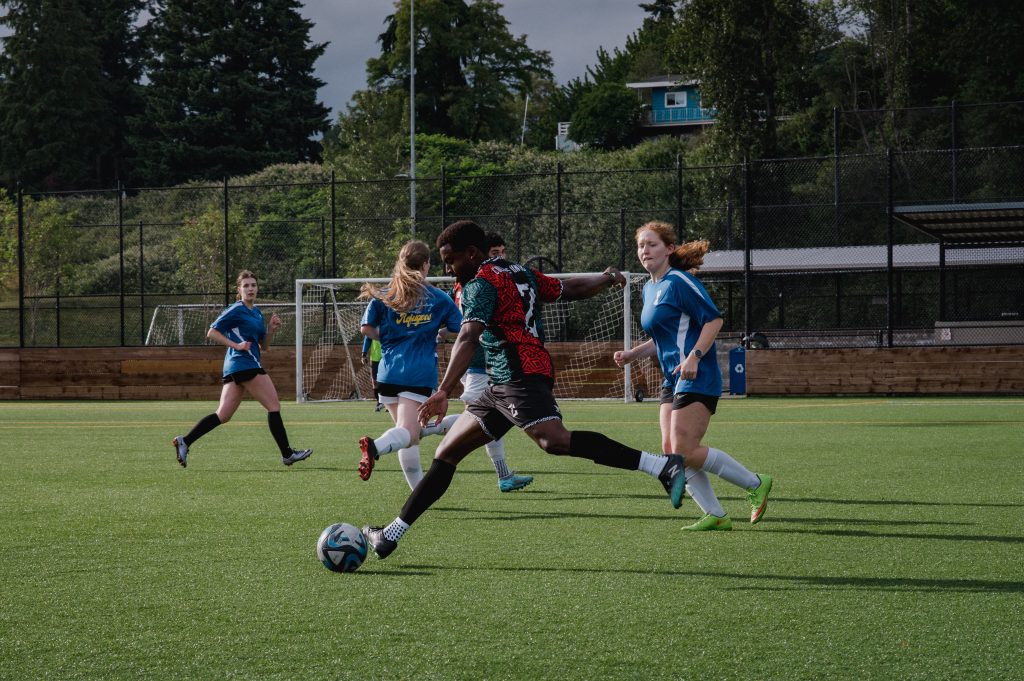
Through soccer, the Cup engaged the community in supporting refugees and immigrants. With the sponsorship and commitment of the community, we hosted a soccer tournament on June 10th to celebrate World Refugee Month! There were 11 teams with around 120 players who participated; including teams from local resettlement agencies, community leagues and our own World Relief Team.
While it was a drizzly morning, there was an amazing turnout! People came out in support of their friends, teams, and the work of resettlement through World Relief. Many people were engaged in conversation with members of our staff, getting to know our mission and vision. Many teams had players who have experienced resettlement as well as teams from other services organizations, like the International Rescue Committee.
People experienced World Relief through a unifying sport, having the chance to interact with others from across cultures and the community.
